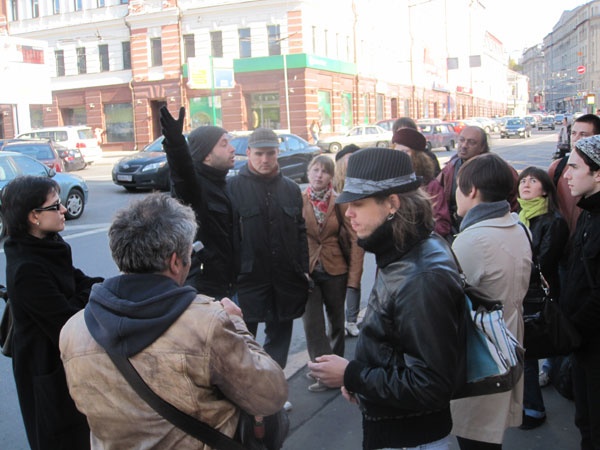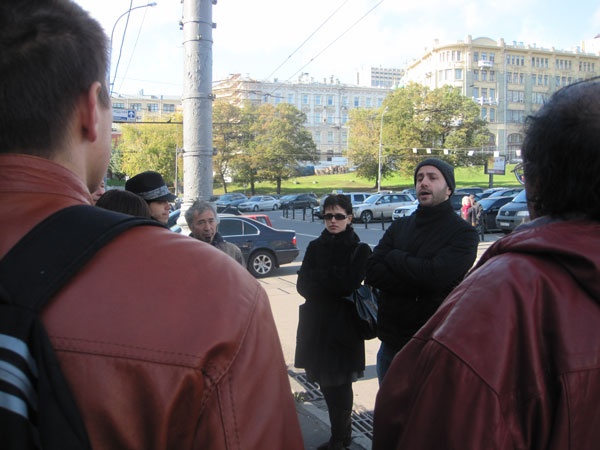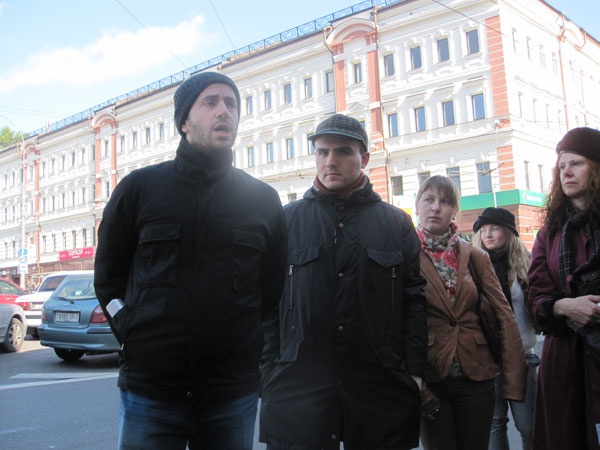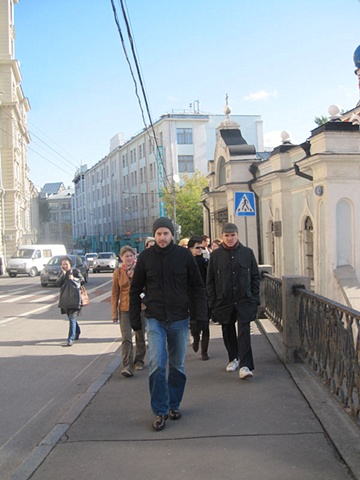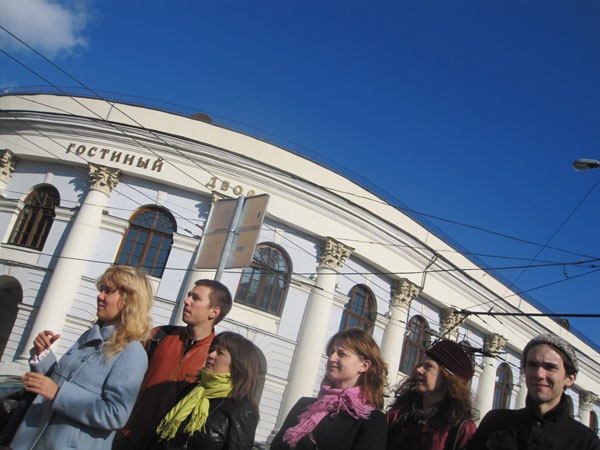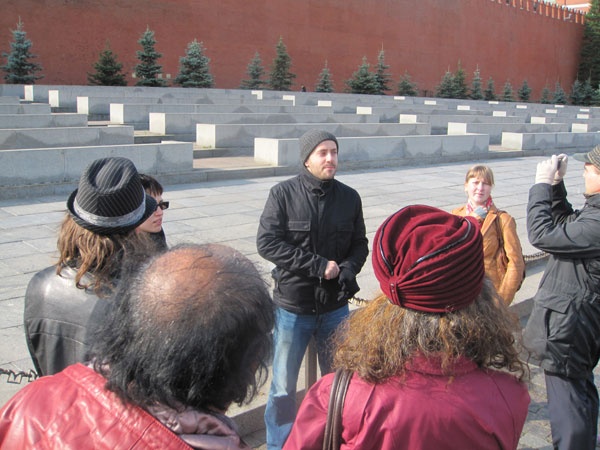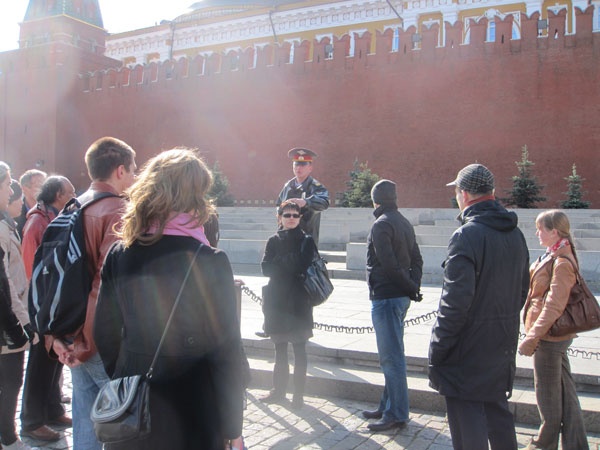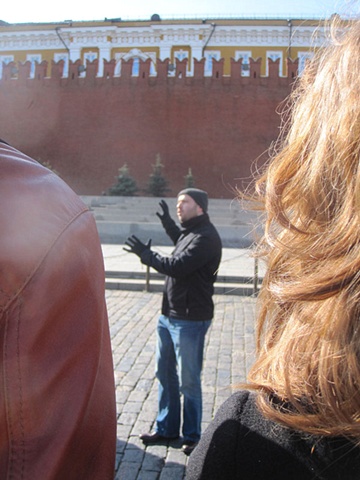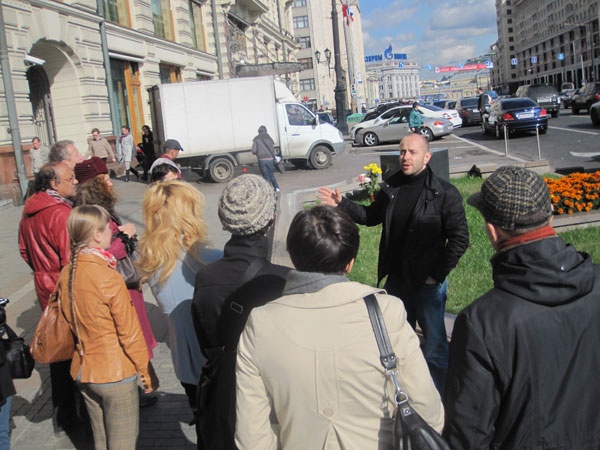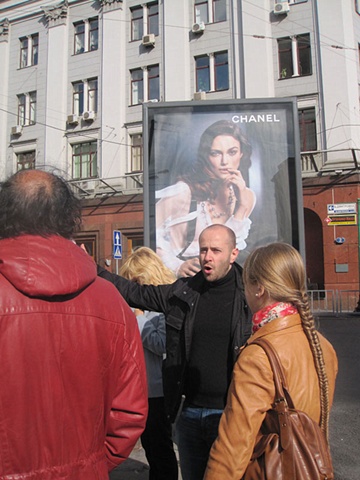American Communists in Moscow, 2009
Project for the 3rd Moscow Bienniale of Contemporary Art
“American Communists in Moscow” is series of walking tours of Moscow with Yevgeniy Fiks as a tour guide. Several identical walking tours will be conducted both in Russian and English. Each tour will be approximately two-hours long.
Yevgeniy Fiks will take the tourists to Moscow sites that are connected to American Communists, who lived, worked, or died in Moscow during the Soviet era. Fiks will explain the significance of each site in the context of the personal history of a particular American Communist, history of the Communist Party USA, international Communist movement, larger context of American History, and Soviet-American relations.
Among the sites that will be visited on the tour will be Marx-Engels-Lenin Institute, where the General Secretary of the Communist Party USA Gus Hall studied in 1931-1933; “National” Hotel where American singer Paul Robeson lived during his visits to the Soviet Union; Tchaikovsky Hall, where a famous concert of Robeson took place in 1949; Moscow State University where the founder of the American Communist Party Charles Rothenberg studied in 1921-1924 and where in 1979 American Communist activist Angela Davis was made an honorary professor; "Sovetskaya" Hotel, where important American Communist Henry Winston lived in exile in the 1960s; the former Communist University of the Toilers of the East, where African-American Communist Haywood Hall studied in the 1920 and who later became vice-chairman of the Negro subcommittee of the Comintern; tractor and agricultural equipment factory in Moscow where Charles Ruthenberg worked in the 1920s; Kremlin Wall, where American writer and Communist John Reed and Charles Ruthenberg were buried; the Red Square where, Communist Party USA Chairwoman Elizabeth Gurley Flynn was given state funeral in 1964.
This is a project of alternative “Americanization” of Moscow. In “American Communists in Moscow,” Fiks projects the history of the American Communist movement onto the geography of the Russian capital. The artist’s tours narrate about the invisible “Moscow of American Communists” and map the seemingly foreign history of the American Communist movement (and therefore a larger narrative of American History) onto Moscow’s urban space. Surprisingly, in Fiks’ tour the Russian capital is presented a site crucial for the history of the American Communist movement. In this project the city of Moscow becomes a site of American history.
